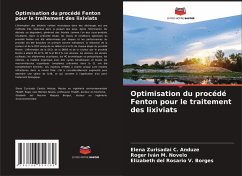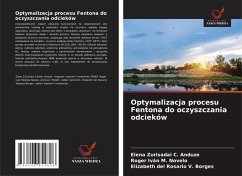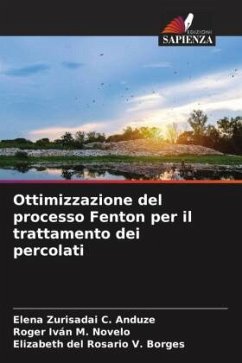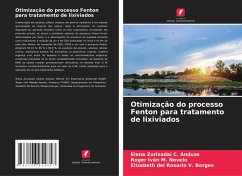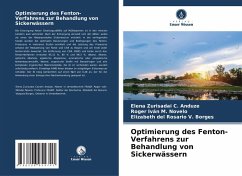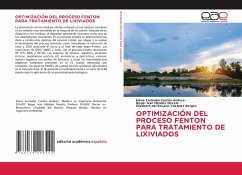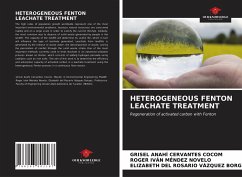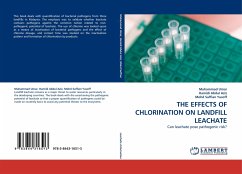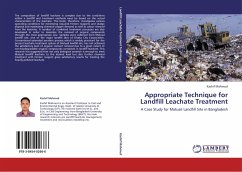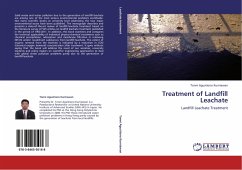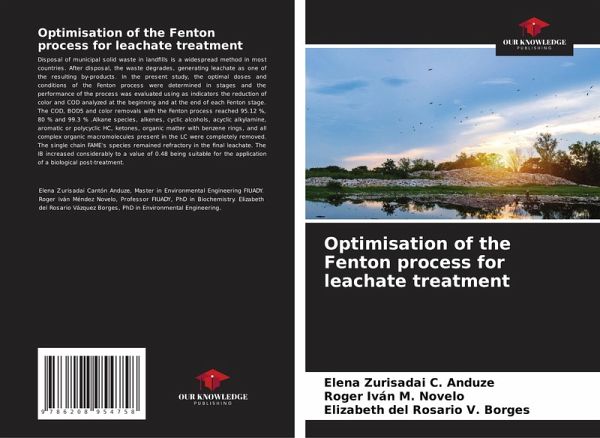
Optimisation of the Fenton process for leachate treatment
Versandkostenfrei!
Versandfertig in 6-10 Tagen
40,99 €
inkl. MwSt.

PAYBACK Punkte
20 °P sammeln!
Disposal of municipal solid waste in landfills is a widespread method in most countries. After disposal, the waste degrades, generating leachate as one of the resulting by-products. In the present study, the optimal doses and conditions of the Fenton process were determined in stages and the performance of the process was evaluated using as indicators the reduction of color and COD analyzed at the beginning and at the end of each Fenton stage. The COD, BOD5 and color removals with the Fenton process reached 95.12 %, 80 % and 99.3 % .Alkane species, alkenes, cyclic alcohols, acyclic alkylamine,...
Disposal of municipal solid waste in landfills is a widespread method in most countries. After disposal, the waste degrades, generating leachate as one of the resulting by-products. In the present study, the optimal doses and conditions of the Fenton process were determined in stages and the performance of the process was evaluated using as indicators the reduction of color and COD analyzed at the beginning and at the end of each Fenton stage. The COD, BOD5 and color removals with the Fenton process reached 95.12 %, 80 % and 99.3 % .Alkane species, alkenes, cyclic alcohols, acyclic alkylamine, aromatic or polycyclic HC, ketones, organic matter with benzene rings, and all complex organic macromolecules present in the LC were completely removed. The single chain FAME's species remained refractory in the final leachate. The IB increased considerably to a value of 0.48 being suitable for the application of a biological post-treatment.



